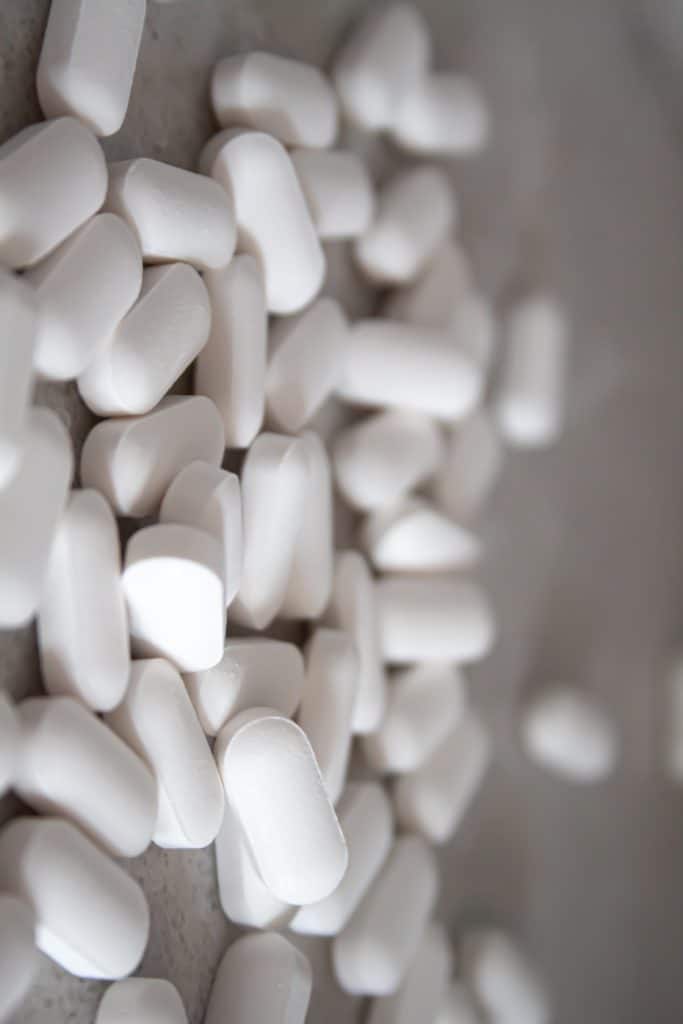What Is Tramadol?
Tramadol is an opioid pain reliever that is typically used after surgery to alleviate pain. It is sometimes used to reduce dental pain. Aside from its analgesic properties, tramadol also prevents the reuptake of norepinephrine and serotonin, resulting in mood changes. Using tramadol for more prolonged periods can change your brain chemistry, and make tramadol detox more challenging. This is the result of having chemical dependence on tramadol.
There are a large number of other drugs that may interact with tramadol, that is why it is important to always tell your doctor about other medicines you are taking and avoid developing a dependence on tramadol.
As you become more dependent on tramadol, your body behaves like it needs tramadol to thrive. Hence, when you suddenly stop using it, you’ll experience physical and psychological effects such as intense cravings and irritability. Experiencing tramadol detox can make it complicated for you to think well and makes you tempted to use tramadol excessively. If you want to heal yourself from this, you need to eliminate tramadol’s dependence on your mind and body. Tramadol detox is the only process to do it.
According to MedlinePlus.gov, tramadol comes as a tablet, a solution (liquid), an extended-release (long-acting) tablet, and an extended-release (long-acting) capsule to take by mouth. The regular tablet and solution are taken usually with or without food every 4 to 6 hours as needed. The extended-release tablet and extended-release capsule should be taken once a day. Take the extended-release tablet and the extended-release capsule at about the same time of day every day.
If you are taking the extended-release capsule, you may take it with or without food. If you are taking the extended-release tablet, you should either always take it with food or always take it without food. Take tramadol exactly as directed. Do not take more medication as a single dose or take more doses per day than prescribed by your doctor. Taking more tramadol than prescribed by your doctor or in a way that is not recommended may cause serious side effects or death.

What is Tramadol serotonin syndrome?
Tramadol is a pain reliever that works by altering the way the brain and nervous system react to pain. In addition to being a mu-opioid receptor, tramadol inhibits the reuptake of serotonin and norepinephrine in the brain. Tramadol increases the concentration of serotonin in the synapses between the serotonergic neurons found in the brain stem. This extra serotonin causes some of the positive effects of the medication, such as pain relief.
If too much serotonin builds up in the synapses between the brain cells, this can lead to serotonin toxicity, also known as Tramadol serotonin syndrome. Using this medication alone could result in Tramadol serotonin syndrome, particularly if a person takes too much of the medication or takes more than they are prescribed.
Tramadol serotonin syndrome is often associated with the use of antidepressants that act on serotonin in the brain (SSRIs), and it can be triggered by a dose increase or the addition of another medication that also works on serotonin levels. It can also occur from overdosing on a prescription medication that floods the brain with serotonin.

An article from Evidence-Based Medicine Consult explains that tramadol can increase the risk for serotonin syndrome in those who are on antidepressants. Chronic pain and depression are common co-occurring disorders, and tramadol may often be used along with a selective serotonin reuptake inhibitor (SSRI) antidepressant.
When tramadol is combined with an SSRI that has the same effect on serotonin, the result can be Tramadol serotonin syndrome. Tramadol has also been identified to be risky when used with mirtazapine and olanzapine.
How Is Tramadol Serotonin Syndrome Identified?
Tramadol serotonin syndrome is characterized by changes in mental status and excessive activity in the neuromuscular and autonomic systems. This happens when a disproportionate amount of serotonin floods the central nervous system, which includes the brain.
Symptoms usually begin within 24 hours of a change in dosage of a serotonergic drug, the addition of another serotonergic medication to a drug regimen, or an overdose of any of those drugs, according to a description of the condition published in the Ochsner Journal.
Symptoms of Tramadol serotonin syndrome include the following:
- Agitation
- Muscle tension
- Tachycardia
- Hypertension
- Pupil dilation
- Excessive sweating
- Spike in blood pressure
- Tremors
These symptoms can present as muscle twitching, elevated heart rate, hallucinations or delusions, uncontrollable muscle movements, anxiety, and irritability.
What To Do About Tramadol Serotonin Syndrome
In mild cases, symptoms of Tramadol serotonin syndrome will fade 24 to 72 hours after stopping the problematic medication. More severe cases triggered by long-term use of serotonergic drugs, such as tramadol and SSRIs, could take several weeks to disappear completely.
If any of the above symptoms occur after increasing a dose of tramadol or after adding tramadol to an existing SSRI regimen, it could be a sign of Tramadol serotonin syndrome. Seek out a medical evaluation.
A doctor can evaluate whether you are experiencing serotonin syndrome or if your symptoms are related to another condition. There is no specific test for serotonin syndrome, so the doctor has to rule out potential causes for the symptoms and evaluate the patient’s medical history to determine if serotonin syndrome is the presenting problem.
How To Recover From Tramadol Serotonin Syndrome
Tramadol serotonin syndrome is treated based on the severity of the presenting symptoms. Stopping the problematic medication is the first step in treating the condition. A doctor may discontinue tramadol and substitute a different pain medication for controlling any symptoms.
Some medications that can be used to treat symptoms in severe cases of Tramadol serotonin syndrome are:
- Serotonin-production blocking agents
- Muscle relaxers
- IV fluids
- Oxygen
- Breathing machines
- Blood pressure medications
- Medications to slow heart rate
Drink water to restore hydration. Avoid strenuous activity that could elevate your heart rate or cause a rise in body temperature. Rest and avoid overstimulation.
An article from the American Journal of Medicine notes that Tramadol serotonin syndrome can be effectively treated with benzodiazepines medications and by discontinuing tramadol and other contributing drugs. Cyproheptadine, an antihistamine, may also be used in moderate to severe cases of the condition.
The combination of rest and appropriate medications should help to resolve the most severe symptoms in the first 24 to 72 hours. In more severe cases, when there has been prolonged use of serotonergic drugs, symptoms could take up to six weeks to resolve.
Tramadol serotonin syndrome can be reversed. While most people fully recover from the symptoms, the condition can be life-threatening if severe. Most people can be treated on an outpatient basis and will see symptoms resolve in one to three days. Some people may require hospitalization if their symptoms are life-threatening, such as respiratory distress or extreme dehydration.
If Tramadol serotonin syndrome is determined to be associated with tramadol use, stop taking tramadol and seek advice about your medication regimen. There may be other options to treat pain, or your doctor may want to take you off all SSRIs until the symptoms resolve. Seek evaluation from your doctor as soon as you suspect that serotonin syndrome may be responsible for your symptoms.

How to Avoid Tramadol Serotonin Syndrome
The risk for tramadol serotonin syndrome increases when larger doses are taken and when it is taken with other SSRI drugs. To reduce your risk, take all your medications only as prescribed and talk to your doctor about potential interactions between your medications. Medications that affect serotonin levels in the brain are sometimes necessary to treat pain and depression, but they have an impact on the brain’s natural chemistry. Take these medications with caution.
Tramadol Overdose and Addiction Statistics
Tramadol use is on the rise. According to government statistics, tramadol prescriptions increased by 88% in just five years, from 23.3 million in 2008 to 43.8 million in 2013. With all that tramadol floating around, more and more people are finding themselves in trouble. Between 2005 and 2011, the number of tramadol-related emergency room visits involving abuse or misuse increased by 250%.
Regardless of whether you are abusing it or taking it therapeutically, tramadol can cause tolerance and dependence. When you become physically dependent on a drug, you experience withdrawal symptoms when you stop taking it without going through a medically-supervised tramadol detox.
During tramadol withdrawal, you can expect to feel flu-ish and sick to your stomach. You may sweat and have chills. You might have trouble sleeping and feel much more irritated and aggravated than usual. You might also experience varying degrees of anxiety and depression. Tramadol withdrawal symptoms typically begin within one or two days of your last dose and usually resolve in about a week.
In most cases, the symptoms of tramadol withdrawal are going to be less intense than those that occur with other opioids, like heroin and oxycodone. Tramadol’s effects on the opioid receptors are comparatively mild, which means that it will be easier for your brain to adjust to its absence.
Your withdrawal experience will also depend on the factors that led you to become dependent on tramadol in the first place, such as your level of pain and history of substance abuse. An opioid use disorder (addiction) presents additional complications. If you want to heal yourself from this, you need to eliminate tramadol’s dependence on your mind and body. Tramadol detox is the only process to do it.
Reclaim Your Life From Tramadol Serotonin Syndrome
If too much serotonin builds up in the synapses between the brain cells, this can lead to serotonin toxicity, also known as Tramadol serotonin syndrome. This happens when a person takes too much of the medication or takes more than they are prescribed. Tramadol addiction is a condition that can cause major health, social and economic problems that should not be taken lightly.
We Level Up California can provide you, or someone you love, the tools to recover from addiction with professional and safe tramadol detox. Feel free to call us to speak with one of our counselors. We can inform you about this condition by giving you relevant information. Our specialists know what you are going through. Please know that each call is private and confidential.